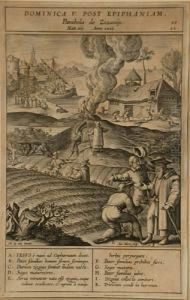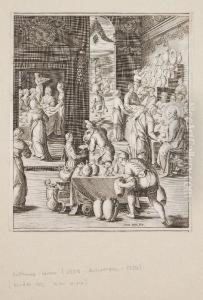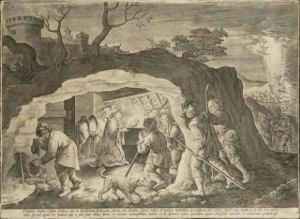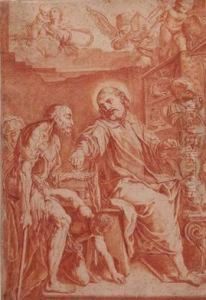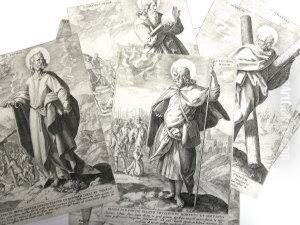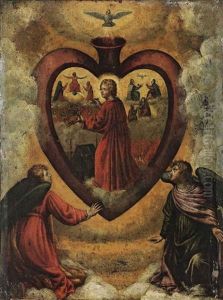Anthonie Wierx Wierix Paintings
Anthonie Wierix, also known as Antonie or Anthony Wierix II, was born in 1552 in Antwerp, which was then part of the Spanish Netherlands. He was a member of the prominent Wierix family of engravers, which included his elder brother Hieronymus Wierix and his younger brother Jan Wierix. The Wierix brothers were known for their incredibly detailed and delicate engraving work, which was highly regarded during the late Renaissance period in Northern Europe.
Anthonie's father, Anton Wierix I, was also an engraver, and it is believed that the brothers received their initial training from him. The Wierix family's engravings were often based on the works of leading artists of their time, such as Albrecht Dürer and Hans Holbein. They were known for their technical skill and ability to reproduce the works of these masters with a high degree of fidelity.
Anthonie worked in Antwerp for most of his life and contributed to the family workshop, which produced engravings that were sought after by collectors and patrons across Europe. The subjects of their engravings included religious scenes, portraits, allegorical scenes, and illustrations for books. The brothers' work was characterized by the fine detail and precision of their line work, which allowed for intricate and expressive imagery.
In addition to his work as an engraver, Anthonie may have also been involved in the publishing business that the family operated, although this aspect of his career is less well documented. The Wierix brothers' engravings were often used as illustrations for Bibles, prayer books, and other religious literature, which were distributed widely.
Anthonie Wierix died in 1624. Today, the works of the Wierix family are considered important examples of Northern Renaissance printmaking, and their engravings are held in the collections of major museums and libraries around the world. Their technical skill and the artistry of their engravings have continued to be appreciated by art historians and collectors for centuries after their creation.
